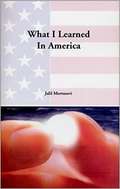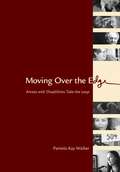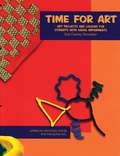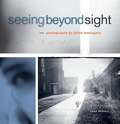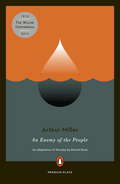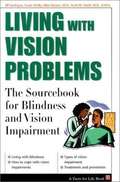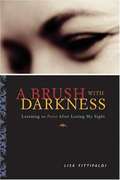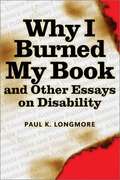Special Collections
Disability Collection
Description: Bookshare is pleased to offer a collection focused on the topic of disability and accessibility. #disability
- Table View
- List View
What I Learned in America
by Jalil MortazaviAMERICA, THE LAND OF OPPORTUNITY EVEN FOR A BLIND JOURNALIST FROM IRAN Throughout the world, millions of people believe if you are blind that this prevents you from traveling too far from home. Others, of course, may have these same beliefs but have just kept them to themselves. Thus begins Jalil Mortazavi's engaging and baffling experience as he tries to overcome such odd thinking. In his book, he tries to cover much of what he has learned in the hope that it will inspire, delight, and amuse his audience. Mortazavi is an Iranian-American journalist who lives in Brookline, Massachusetts. He works for the Persian-American Media Watch. He has also been associated with Persian Voice of Boston, 24-Hour Persian Radio based in California, and 24-Hour Persian TV [NI TV]. He has appeared on Imus in the Morning, and he has done some news commentary on National Public Radio's All Things Considered and on Talk of the Nation. In addition, Jalil enjoyed being a guest on a number of different television and radio talk shows WCV TV, American Radio Network in Baltimore, and radio stations WBZ, WHDH, WRKO, WROR, and WTTP. Mortazavi has also written for such publications as The Boston Globe, The Boston Herald, and The Brockton Enterprise.
Moving over the Edge
by Pamela K. WalkerA book about the author's coming of age alongside disability activists and artists with disabilities, reflecting the sociological evolution from disability rights to disability culture. It features many of the artists and groups that emerged in the San Francisco Bay Area in the late 1980s, including Axis Dance Company, Bruce Curtis, CJ Jones, David Roche, Cheryl Marie Wade and Wry Crips Disabled Women's Theater.
Time For Art
by Gail Cawley ShowalterThis simple manual gives some helpful suggestions for people who want to teach art to children who are blind or visually impaired. It also gives some suggestions on projects that the students can do. It is not intended as the "all around authority" on the topic but serves as a spring board into other projects and ideas. Topics and projects include, fake fossils, aluminum repousse, papier mache bowls, wire sculptures, and raised line drawings. Good book for anyone interested in ways to adapt lessons in art for learners with special needs. Also includes art projects which relate to science.
Seeing Beyond Sight
by Tony DeifellFor five years Tony Deifell taught teenagers to take photographs. His students were blind. Unusual as the idea may seem at first, putting cameras in the hands of visually impaired children proved to be extremely fruitful both for the photographers, who found an astonishing new means of self-expression, and for the viewers of their images, for whom this is an entirely new kind of dreamlike and intuitive creation. Even before you know that these pictures were taken by blind teenagers, they are striking in their use of light and composition, and haunting in their chiaroscuro intensity. To learn more, visit http://www.seeingbeyondsight.org/
An Enemy of the People
by Henrik Ibsen and Arthur MillerWhen Dr. Stockmann discovers that the water in the small Norwegian town in which he is the resident physician has been contaminated, he does what any responsible citizen would do: reports it to the authorities.
But Stockmann's good deed has the potential to ruin the town's reputation as a popular spa destination, and instead of being hailed as a hero, Stockmann is labeled an enemy of the people.
Arthur Miller's adaptation of Henrik Ibsen's classic drama is a classic in itself, a penetrating exploration of what happens when the truth comes up against the will of the majority. This edition includes Arthur Miller's preface and an introduction by John Guare.
Living with Vision Problems
by Jill Sardegna and Susan Shelly and Allan Rutzen and Scott M. SteidlMillions of Americans have a significant level of vision impairment. This revised edition of Living with Vision Problems is designed to provide students with helpful information such as: how to cope, causes and types of vision impairments, preventions, treatments and even LASIK procedures. It is an extensive sourcebook for all topics, including medical, concerning blindness.
A Brush With Darkness
by Lisa FittipaldiWhen Lisa Fittipaldi went blind at the age of forty-seven, she descended into a freefall of anger and denial that lasted for two years. In this moving memoir, she paints a vivid picture of the perceptual and emotional darkness that accompanied her vision loss, and her arduous journey back into the sighted world through mastery of the principles of art and color.
Why I Burned My Book And Other Essays On Disability
by Paul K. LongmoreThis wide-ranging book shows why Paul Longmore is one of the most respected figures in disability studies today. Understanding disability as a major variety of human experience, he urges us to establish it as a category of social, political, and historical analysis in much the same way that race, gender, and class already have been. The essays here search for the often hidden pattern of systemic prejudice and probe into the institutionalized discrimination that affects the one in five Americans with disabilities.
Whether writing about the social critic Randolph Bourne, contemporary political activists, or media representations of people with disabilities, Longmore demonstrates that the search for heroes is a key part of the continuing struggle of disabled people to gain a voice and to shape their destinies. His essays on bioethics and public policy examine the conflict of agendas between disability rights activists and non-disabled policy makers, healthcare professionals, euthanasia advocates, and corporate medical bureaucracies.
The title essay, which concludes the book, demonstrates the necessity of activism for any disabled person who wants access to the American dream.
Author note: Paul K. Longmore is Professor of History at San Francisco State University. He is the author of The Invention of George Washington and the co-editor (with Lauri Umansky) of The New Disability History: American Perspectives.
